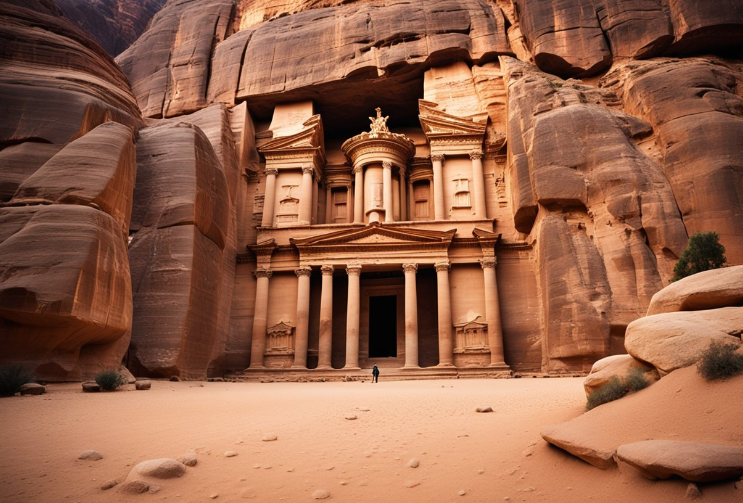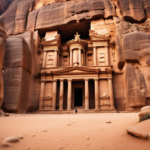Petra, Jordan is an ancient city that is known for its beautiful rock-cut architecture and water conduit system. The city was the capital of the Nabataean kingdom and a major trading hub in the ancient world. Petra is also known as the “Rose City” due to the color of the stone its buildings feature. It was designated as a UNESCO World Heritage Site in 1985 and is one of the New Seven Wonders of the World.

The city of Petra is located in southern Jordan and is known as the “Lost City” due to the fact that it was forgotten by the Western world for centuries. Petra is an important archaeological site that offers a glimpse into the past and the way of life of the Nabataeans. The city is surrounded by mountains and canyons, which makes it a unique and beautiful place to visit.
If you are interested in history and architecture, Petra, Jordan is a must-visit destination. The city is a perfect example of the ingenuity and creativity of ancient civilizations. With its stunning rock-cut architecture, water conduit system, and rich history, Petra is a place that you will never forget.
Historical Overview

Petra is an ancient city located in present-day Jordan, and it has a rich history that spans thousands of years. The city was first established during the Nabataean era, which lasted from the 4th century BC to the 1st century AD. During this time, Petra served as the capital of the Nabataean Kingdom, and it was an important center of trade and commerce.
Nabataean Era
The Nabataeans were a nomadic Arab tribe that settled in Petra around the 6th century BC. They were skilled merchants and traders, and they established a prosperous kingdom by controlling the trade routes that passed through Petra. The Nabataeans built many impressive rock-cut dams, temples, and monuments, which are still visible in the ruins of Petra today.
Roman Influence
In the 1st century AD, the Roman Empire conquered Petra and incorporated it into the province of Arabia. The Romans added many new buildings and structures to the city, including an amphitheater and a colonnaded street. Petra became an important center of Roman culture and commerce, and it continued to thrive under Roman rule for several centuries.
Christian and Byzantine Period
During the Christian and Byzantine period, Petra became an important center of Christianity. Many Christian churches were built in the city, and Petra became a pilgrimage site for Christians from all over the world. The city also played an important role in the Byzantine Empire, and it was a key military and commercial center.
In summary, Petra has a rich and diverse history that spans thousands of years. It has been an important center of trade, commerce, and culture for many different civilizations, including the Nabataeans, Romans, and Byzantines. Today, visitors can explore the ruins of Petra and learn about its fascinating history and heritage.
Geographical and Architectural Features

Natural Features
Petra, located in the southern part of Jordan, is known for its unique geographical features. The city is carved out of red sandstone cliffs and surrounded by desert. The Siq, a narrow gorge that leads to the city, is a natural wonder that is over 1 kilometer long. The towering cliffs on either side of the Siq are breathtaking and provide a glimpse of what lies ahead. Once you emerge from the Siq, you will be greeted by the Treasury, one of Petra’s most famous landmarks.
Architectural Highlights
Petra is famous for its rock-cut architecture. The city’s tombs, temples, and other structures were carved directly into the sandstone cliffs. The Treasury, the Monastery, and the Royal Tombs are some of the most impressive examples of this unique architectural style. The Colonnaded Street, which runs through the heart of the city, is another architectural highlight. This ancient street is lined with columns and was once the main thoroughfare of Petra.
Water Management System
Petra’s water management system is another impressive feat of engineering. The city’s inhabitants were able to collect and store water from the surrounding hills and valleys using a network of cisterns and channels. The water was then distributed throughout the city using ceramic pipes. This system allowed Petra to thrive in an otherwise arid region and was crucial to the city’s survival.
Overall, Petra’s unique combination of natural features and impressive architecture make it one of the most fascinating archaeological sites in the world. A visit to Petra is a journey back in time to a lost city that has been beautifully preserved for centuries.



